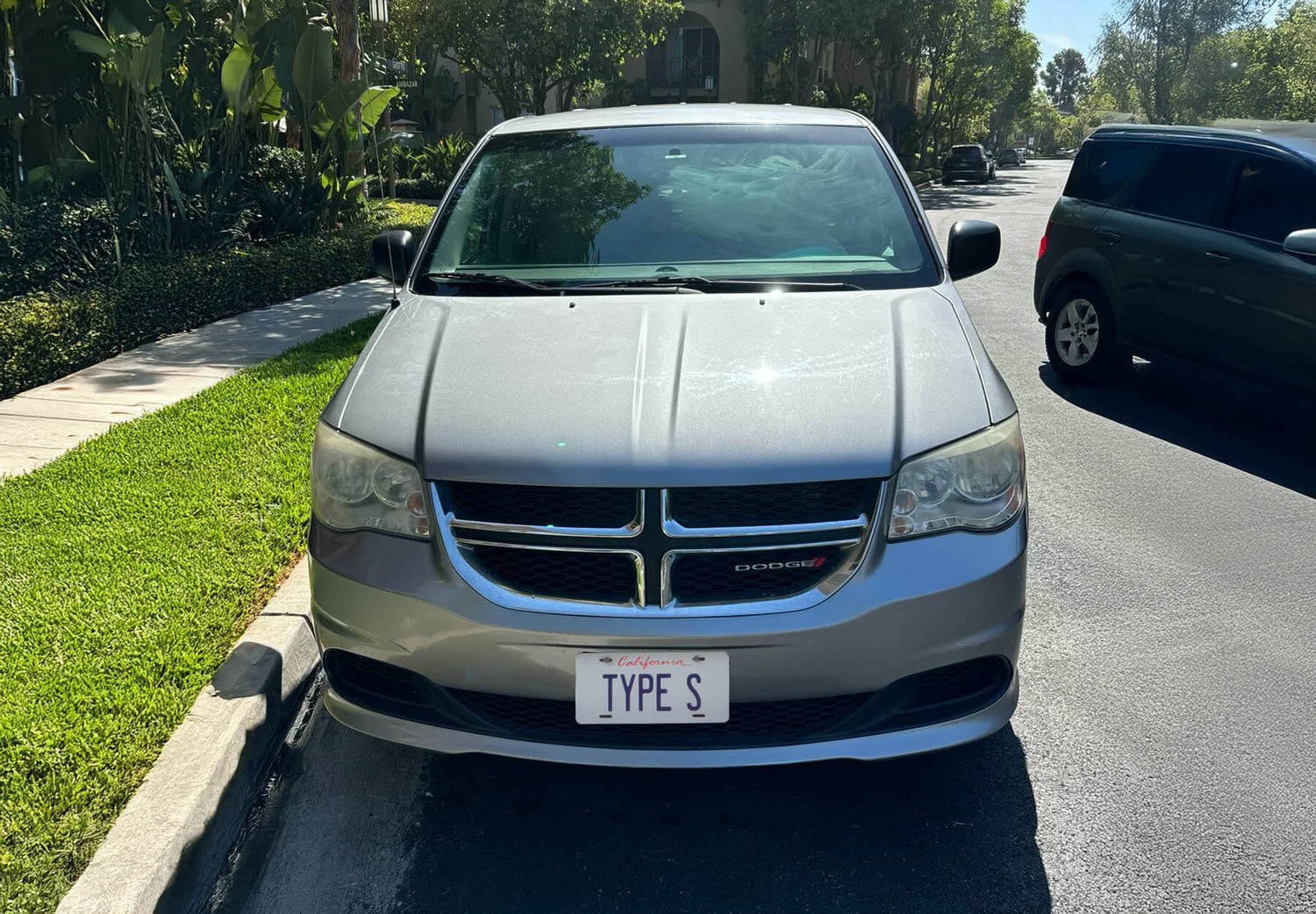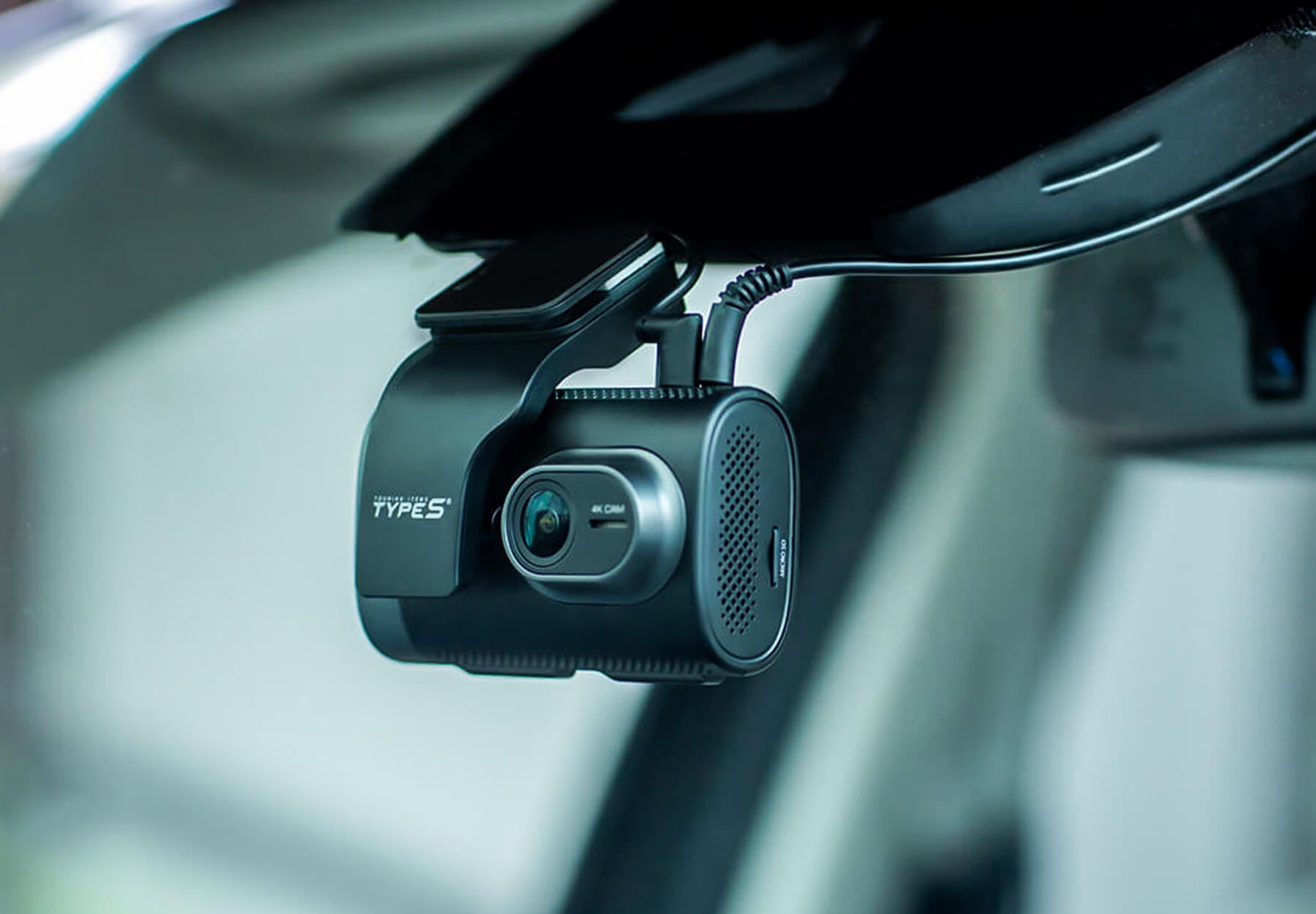When installing a dash cam on a minivan, rear visibility is one of the biggest concerns. Minivans, due to their size, often have blind spots that a standard rearview mirror cannot address. This is why we recommend using a mirror dash cam with a rear camera for enhanced visibility and safety. For this guide, we'll be using the TYPE S Y400 PLUS mirror dash cam as an example, a model that perfectly suits minivan drivers.
However, it's important to note that various types of dash cams exist, and each has unique benefits. Whether you need a front-only, front-interior, 360, or AI-powered dash cam, there’s an option for every type of driver. Let’s take a quick look at some other dash cam options:
Types of Dash Cams to Consider:
-
Front-Only Dash Cam
These are the most basic types, ideal for drivers who only want to capture what happens in front of the vehicle. -
Front-Interior Dash Cam
Perfect for rideshare drivers, this setup records both the front of the vehicle and inside the cabin, offering extra security for passengers and drivers alike. -
360 Dash Cam
This type covers all angles, providing a panoramic view inside the car—useful for capturing side impacts or incidents that occur next to the vehicle. -
AI-Powered Dash Cam
These advanced models, like the TYPE S T200 PLUS, come equipped with features like lane departure warning, collision detection, and blind spot monitoring. These are ideal for drivers seeking more proactive safety features.
For a minivan, we recommend the TYPE S Y400 PLUS mirror dash cam because it not only replaces the standard rearview mirror but also comes with a rear camera that significantly improves visibility—especially for long vehicles like minivans.
Step-by-Step Installation
Step 1: Test the Dash Cam and Cigarette Lighter

Before committing to installation, we recommend testing the dash cam system to ensure everything works properly.
-
Connect the dash cam to the cigarette lighter socket
Plug the TYPE S Y400 PLUS dash cam into your vehicle’s 12V socket (cigarette lighter socket). -
Power On
Turn on your vehicle to ensure that the dash cam powers up correctly. Make sure the screen is responsive, and the front and rear cameras provide a clear view. -
Check the Cigarette Lighter Functionality
Ensure that the 12V socket is functioning properly, as it will be the primary power source unless you opt for hardwiring.
Step 2: Mounting the Mirror Dash Cam
 After confirming that everything is working, it’s time to install the dash cam.
After confirming that everything is working, it’s time to install the dash cam.
-
Position the Mirror Cam
Attach the TYPE S Y400 PLUS mirror dash cam over your vehicle’s existing rearview mirror using the provided straps. -
Adjust the Camera Angle
The front camera, which is integrated into the mirror cam, can be adjusted to capture the road ahead. Make sure it is positioned to have a clear view.
Step 3: Installing the Rear Camera
-
Option 1: Above the Rear License Plate
For the most seamless look, the rear camera can be mounted next to or above the license plate. However, this may require drilling a hole through the rear panel. -
Option 2: Inside the Rear Window
Alternatively, you can install the camera on the rear window, which is quicker and easier, though it might reduce the camera’s field of view slightly.
-
Run the Rear Cam Cable
Whether you choose the license plate or rear window, you'll need to run the cable from the rear camera to the front of the vehicle. Tuck the cable along the trim and headliner, using a trim removal tool if necessary to avoid damaging the interior. -
Connect the Cable
Plug the rear camera into the designated port on the mirror dash cam.
Step 4: Powering the Dash Cam
Now that both cameras are in place, it’s time to power the dash cam.
-
Use the 12V Adapter
The simplest way to power the TYPE S Y400 PLUS is by plugging it into the 12V socket. Route the power cable neatly along the windshield and down to the socket for a tidy installation. -
Optional Hardwiring
For continuous recording, especially when parked, you may choose to hardwire the dash cam into the vehicle’s fuse box using a hardwiring kit. This provides constant power for parking mode features.
Step 5: Testing the Setup
Once the installation is complete, test the system thoroughly.
-
Check the Front Camera
Ensure the front-facing camera provides a clear view of the road. -
Check the Rear Camera
Confirm that the rear camera displays a full view, whether installed on the rear window or near the license plate. -
Adjust the Rear Camera Angle
Depending on the installation location, you may need to adjust the rear camera to capture the widest possible view. -
Set Preferences
Customize your recording settings, including resolution, loop recording, and G-sensor sensitivity, through the dash cam’s settings.
Why the TYPE S Y400 PLUS is Perfect for Minivans
-
Rear Visibility
Minivans are long, and standard rearview mirrors can’t always provide a full picture of what’s happening behind the vehicle. The Y400 PLUS solves this by offering a wide-angle rear view through its rear camera. -
Clear Video Quality
The dash cam captures high-definition footage from both the front and rear, ensuring important details are visible in all conditions. -
Seamless Integration
Since the Y400 PLUS attaches to the existing rearview mirror, it doesn't clutter your windshield with additional equipment, making it a sleek, efficient solution for larger vehicles.
Conclusion
By following these steps, you can successfully install a mirror dash cam in your minivan and enjoy the peace of mind that comes with improved visibility and safety. The TYPE S Y400 PLUS is an excellent choice for minivan drivers, offering dual-camera recording and enhanced rearview capabilities—perfect for the long body and unique challenges of driving a minivan.






Leave a comment
This site is protected by hCaptcha and the hCaptcha Privacy Policy and Terms of Service apply.